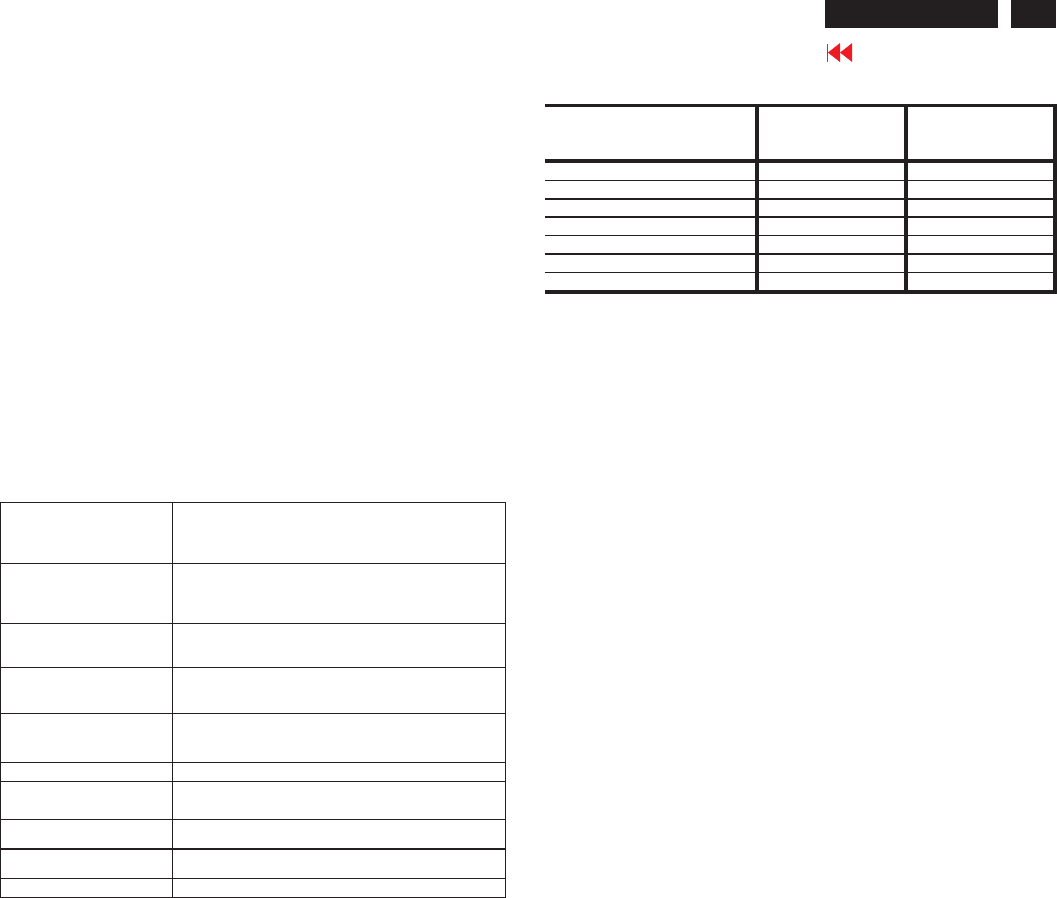
1. Product Specification (continued)
1.4.5.4 Allowable Defects
No cosmetic defects are allowed except those specified
below. The conditions of visual inspections are as
follows :
For 23 series
Viewing distance is to be approximately 35-50cm
Ambient illumination is to be 300 to 700 lux. Viewing
angle shall be at 90 degree. Defects not apparent within
one minute shall be ignored.
1.4.5.5 Defect Terminology
Table 3 gives the descriptive terms used in classifying
defects.
1.4.5.6 Smudges, Streaks and Smears
When viewing the panel oriented so as to maximize
reflected light , there shall be no visible smudging ,
streaking, smearing or other non-uniformity from
contaminants ,fingerprints, or defects in any of the visible
surfaces. This is independent of whether the unit is
operating or off .
1.4.5.7 Other Defects
Undefined defects that are considered to be rejectable
will be reviewed as they become apparent. These
panels will be referred to the Corporate / Manufacturer
Purchasing Agreement for disposition.
1.4.5.8 LCD Inspection
Put LCD panel on inspection table and illuminate the
panel with a daylight fluorescent lamp located above
the panel surface such that the luminance at the LCD
panel is between 1000 lux and 1500 lux .Defect limits
are given in Table 4 .
Table 4
Average Diameter smaller of
(L+W)/2 or L /20+2W
Acceptable Number Minimum Separation
< 0.1mm Non countable N / A
0.1mm~0.3mm 10 15mm
0.31 mm ~ 0.5 mm 10 15 mm
0.51 mm ~ 1.25 mm 5 15 mm
1.26 mm ~ 2.5 mm 3 25.4 mm
2.51 mm ~ 3.75 mm 3 25.4 mm
Greater than 3.75 mm NONE Not applicable
Note : Allowable distance between spots of two sizes is the minimum separation
numberfor the smaller spot. Therefore, ifthere are two spots, 1.30mm and 0.4mm
in diameter, they must be at least 15mm apart.
1.5 Optical Characteristics
Depends on the LCD supplier's spec. Details refer to QA
Inspection Spec.
Dark / Spots /Lines
Spots orlines that appeardark in the display patterns and are
usually the result ofcontam ination.Defects do notvary in
size orintensity (contrast) when contrast voltage isvaried.
Contrastvariation can be achieved through the use of varying
gray shade patterns.
BrightSpots / Lines
Spots or lines that appear light in the display patterns.
Defects do not vary in size or intensity (contrast) when
contrast voltage is varied. Contrast variation can be achieved
through theuse of varying gray shade patterns.
Polarizer Scratch
Wh en th e u n it ligh ts, lin es app e ar lig h t (w h ite ) w ith dis p la y
patterns dark and do not vary in size.Physicaldamage to the
polarizer thatdoes notdam age the glass
Polarizer Dent
W hen the unit lights, spots appear light (white) with display
patterns dark and do not vary in size. Physical damage to the
polarizer thatdoes notdam age the glass.
Rubbing Line
Horizontal or diagonal lines that appeargrayw ith the display
patterns dark and m ay have resulted from an “outof control”
rubbing process on the polyimide or“waves” on the BEFs or
prism sheets.
Newton Ring The “rainbow” effect caused by non-uniform cellthickness.
Mo ttlin g
W hen the unit lights,variation / non – uniformity
(sp lo tch in ess ) a pp ea rs light (white ) w ith th e d isp lay an d
mightvaryin size.
Dim Line
Wh en th e u n it ligh ts, lin e (s) in th e mon ito r (v ertic al) or majo r
(horizontal)axis appeardim,but not com pletely on or off.
Cross Lines Off
W hen the unit lights,lines in both the minorand m ajoraxis
do not appear.
Bright/ Dark Dot A sub – pixel (R,G,B dot)stuck off/ on (electrical).
7
Go to cover page
ACER H233H
